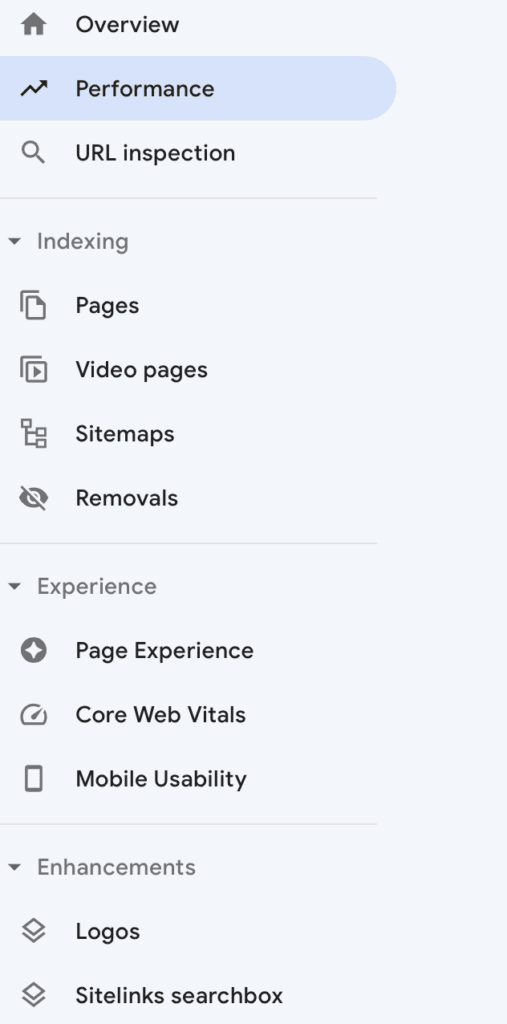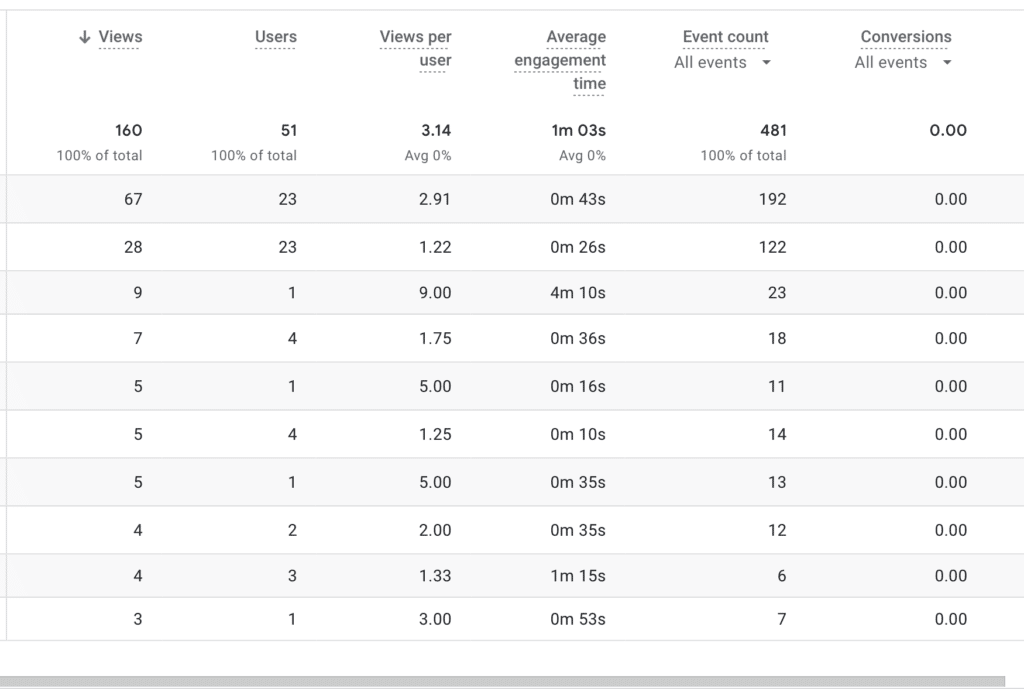In short, the answer is yes. Any redesign will effect search engine rankings because you’ll be editing content on a webpage that has been indexed. This means you’ll need to consider the impact of changes such as new URL structure, page titles, meta descriptions, and redirects when embarking on a redesign project to ensure that your SEO efforts are not negatively impacted. However, expect to see some changes to organic traffic while things settle down.
Why should I redesign my website?
Website redesigns are beneficial for a range of reasons. Updating functionality, design and content can help make your website more attractive to users and search engines.
This, in turn, will result in higher engagement levels and better rankings for your website on SERPs. Additionally, modern web design practices such as responsive designs could enable you to reach more people, especially now as more people are viewing websites on their mobile devices.
SEO Considerations
Before you embark on any redesign, you’ll need to audit your site from an SEO perspective to see your keyword rankings, what internal links you have on your pages, and what content is currently performing well and which isn’t.
You’ll also need to check inbound links to your website. These are crucial and will need to be redirected using 301 redirects. This is a critical step in website redesigns as it helps keep your rankings and prevents users from landing on 404 pages from broken links, which will negatively impact your new site.
Several free SEO tools will help Audit your site, so you don’t have to do it manually. Pop it into google to find which ones are best for you, have a look at a more in-depth SEO migration article here.
Google Search Console and Analytics
Google itself holds a lot of information about your site. To find out how your current content is performing, you can log into your google search console and google analytics account. You’ll need to factor into the redesign process.
Search performance
When you log into analytics, you’re presented with the performance dashboard. From here, you can see how well you’re doing currently. The search results shows are split into two categories, clicks and impressions:-
- Clicks (the blue line) are every time someone has clicked through on to your webpage.
- Impressions (the purple line) are every time your website appears when someone searches for a keyword or phrase.

Using the chart below, you can also split down further into what keywords people are looking for or queries by page, countries, devices, search appearance and dates.
You can use the menu on the left-hand side to delve deeper into how your sites are doing over a range of measurements.

Analytics
Logging into analytics will let you drill down how long people stay on pages to see the best-performing content. Analytics will record all website traffic.
Analytics is a potent tool where you can see detailed information on your site, such as what web page is performing best, what’s organic search traffic and what referral traffic.
If you select the engagement drop-down and then pages and screen, you’ll get a table of all your pages with lots of different metrics, like how many times a page has been viewed and how long they’ve stuck around on that page.

Gathering all this information into one place will give you a head start on the redesign process, as you’ll want to keep the high-performing content as untouched as possible on the new website.
Key SEO Considerations for Website Redesign
It would be best if you avoid several common errors when redesigning your site to help minimise a drop in your site’s performance. It’s best to have these in the forefront of your mind to try and avoid them, although if it’s a significant redesign, you’ll probably miss some.
Like anything with search engine optimisation, it’s an ongoing game, so you’ll need to frequently check for crawl errors after your new site goes live.
Staging site
A staging site (or dev site) is a copy of your live site that sits on a separate subdomain. Search engine crawlers generally don’t index these. You don’t want people looking at a half-baked site, so we’d always recommend making changes to your staging site.
Site Structure
When looking at your web pages, we suggest you don’t alter your web pages permalink. A permalink is the bit after your domain that is the page’s address, for example, www.company.co.uk/about.
Effectively this will tell google that it’s a new page (as google knows about the current one), so it will potentially still serve the page in page rankings. When someone clicks on the link, they’ll go to the old website address and get a 404 error. This will allow you to redesign the site without impacting your live website. Not suitable for a user and not good for search engine crawlers either.
Redirects
If you have to change permalinks, place a 301 redirect in your .htaccess file. Using an SEO plugin such as Yoast or SEO press will automatically add a redirect for you.
Another reason not to change your permalinks is that you have links on your pages to other pages on your website. For example, if you have blog posts that link to each other, you’ll have to go through all of your posts and update the broken links to point at the new addresses.
Suppose you’ve got a relatively new site. That’s fine. However, if you’ve got 100’s of articles all linked together, it’ll take some time to go through them.
Again, if you use an SEO plugin, check to see if it has a broken link checker to give you a heads-up on these pages so you can go and fix them. Alternatively, you can use free tools like ahrefs checker.
Mobile Friendliness
More and more people are now using mobile devices to browse the web. This means that any web design needs to cater for different screen sizes precisely the same as if you are building a new site or whether it’s a website refresh.
Pages that aren’t responsive will get penalised, and you’ll lose those website rankings. Test your new designs on several different screen sizes to ensure your website still looks good.
Images
Images paint a thousand words as they say. Images are a vital component of any website. Poorly sized images can hurt SEO if they’re not updated on your website correctly.
Google looks at page speed as one of the metrics it ranks pages for and images are generally large files which will slow your website down.
The way around this is to ensure you compress them to ensure they’re as small as possible. As well as squeezing them you should use next-gen image formats such as WebP as much as possible.
Image alt text should be placed on all your images so use this as an exercise to update any missing text while you’re adding.
Next Steps
Once you’re happy with your redesigned website, it’s time to move it over to your live site.
The process of doing this depends on your web host, you might be able to press a button and move your staging site to live, or it may be a more manual way by using a plugin and copying across.
One of the first things you need to do is create a backup of your current site so that If something goes wrong, you have something you can go back to before trying again.
Search Engines
It’s also good practice to let search engines know about your redesigned website, especially if there are new pages, changes to your site’s structure and alterations to existing pages.
Sitemaps
XML sitemaps are pages of your website that hold information about where everything is on your site for search engine crawlers to read. This makes it easy for search engines to understand your site and find its way around, just like a real map.
Whenever you make substantial changes, you should always resubmit your xml sitemap to google and other search engines. Ensuring they know about the latest changes to your website structure.

You can find your XML sitemap by going to www.yourcompany.com/sitemap.xlm, and google lets you submit new site maps at any time in your search console account.
After that, it is just a case of waiting until the search engines crawl your site again and index new content.
Conclusion
Websites need to be constantly updated to consider the need for new functionality, or maybe you’ve had a brand refresh and need a website refresh to go along with it.
Whatever the reason, you don’t want to hurt your website’s search results by completely changing up all the content, removing a search term or phrase that negatively impacts your already hard-fought for organic traffic.
Always follow a website redesign SEO checklist that follows a similar process:
- Complete an SEO Audit of the old website
- Design your new site including new and updated title tags where necessary
- Add any redirections to permalinks that have changed.
- Ensure all images are compressed as not to impact page speed and have image alt text
- Test existing pages and new pages for mobile friendliness
- Check page speed using tools like GT Metrix
- Create a backup of your live website before copying your site from the staging site
- Submit your new XML sitemaps to search engines
- Monitor your website search traffic and make additional tweaks where necessary.
One thing we would finish on is that if you’re not sure always seek advice from an SEO professional.



